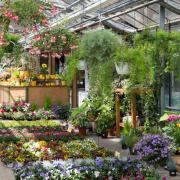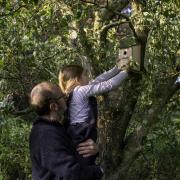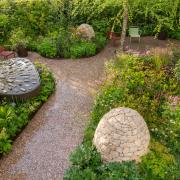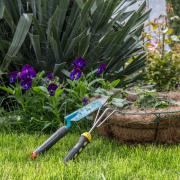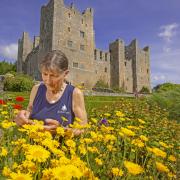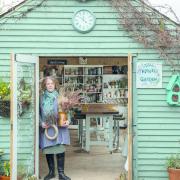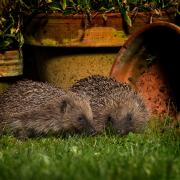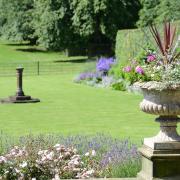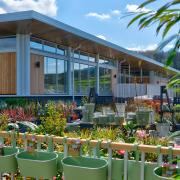Flower meadows show the Yorkshire Dales in their true colours, writes Sebastian Oake
June is a magical time to take a walk in the Yorkshire Dales. Follow a path through the fields of Swaledale, Wensleydale or Wharfedale and you could be treated to a kaleidoscope of colour as traditional Pennine farmers show off their greatest asset – some of the most beautiful flower-rich hay meadows in England.
It’s not unusual to see fields blazing bright from the sheer weight of numbers of meadow buttercups. But traditional hay meadows don’t just come in yellow – they can boast up to 120 different types of plant and many of these produce flowers that add their own vivid hues to the mix, including mauve, blue, red, white and pink.
Sadly, across England, a display like this is less common than it once was. Since the Second World War, intensification of farming has led to increased use of fertilisers allowing vigorous ‘super’ grasses to push out most wild flowers. Earlier cutting of fields for silage has often been adopted, preventing many plants from reaching the flowering stage anyway.
Other changes have had their impact too. Overall, the great majority of species-rich grassland has disappeared since the war, often replaced by monotonous carpets of ryegrass that might be more productive for the farmer but have much less to offer nature.
In the Yorkshire Dales, however, farming methods in harmony with nature have lingered and today the area is one of the last strongholds of the flower-rich upland hay meadow. That said, even this area has not been totally untouched by the march of time. There are many meadows that have declined in interest and others where the richness and diversity have gone altogether.
In 2006 the Hay Time Project was introduced to restore meadows in the Yorkshire Dales National Park by adding locally gathered wild flower seed and then managing the land with greater care. The project was set up by the National Park Authority and its charitable partner, the Yorkshire Dales Millennium Trust. A sister project runs in the Northern Pennines Area of Outstanding Natural Beauty.
Both areas were well chosen because here ecologists have identified one of the rarest grassland types in the country – special communities of plants featuring the mauve flowers of wood cranesbill, often accompanied by the strange yellow balls of globeflower, the purple ‘shaving brushes’ of melancholy thistle, the delicate pink heads of bistort or the brightly coloured spikes of common spotted orchid.
Grassland like this has developed only where traditional management for hay has taken place for a long time in a relatively harsh climate at altitudes between 200 and 400 metres. But it’s not just showy wild flowers that make up a traditional meadow. Equally important, if not to the eye, are wild grasses and sedges. Sweet vernal grass is a particular feature of this sort of meadow.
grassland types of special conservation value in the area, including meadows dominated by crested dogstail grass with knapweed, and damper meadows of crested dogstail with the stunning marsh marigold, a sort of giant buttercup.
The first phase of the project is now complete with 280 hectares of hay meadow restored and Don Gamble, the Hay Time Project Manager for the Yorkshire Dales, said: ‘We’ve done a lot more than we expected.
‘Analysis of the species before and after adding seed has shown that the process really is making the meadows more species-rich. But it’s a slow process and it will be more than a decade before the meadows are fully restored.
‘Getting the seed back in is just the first stage – long term management is key. We’re working with farmers who are signed up to environment schemes through Natural England, so they are committed to getting things right.’ That means taking a single cut of hay in late July and avoiding use of artificial fertilisers and even keeping muck spreading to a minimum.
It seems no easy task to bring the colour back to the meadows that have lost it but Don Gamble is in no doubt that it is worth it. ‘The meadows of the Dales and their diversity are hugely important from a landscape point of view. They’re also vital for wildlife and important for tourism too because people love to come to see them in June. As much as that, they are part of a unique upland farming system that goes back centuries.’
It’s not hard to be convinced by Don’s points. Take a walk by the river in many of Yorkshire’s dales in early summer and it’s clear that traditional meadows are bursting with life.
The wild flowers draw in insects, which provide food for birds and, at dusk, bats. Together with their dry-stone walls and field barns, meadows provide places for yellow wagtails, curlews, grey partridge, twite and swallows, as well as a host of small animals like weasels and stoats.
But the best thing of all is surely that display of rich and vibrant but very natural colours. It’s a sobering thought that in many parts of the country you’d struggle to see anything like this now. It underlines the fact that traditional meadows shouldn’t be taken for granted, not even here in this Dales haven.
More on meadows
You can find out more about the Yorkshire Dales Hay Time Project at www.ydmt.org/hay-time The Yorkshire Dales Millennium Trust has published the book Hay Time in the Yorkshire Dales, which costs �14 (including postage) and can be ordered from the trust on 015242 51002 or at www.ydmt.org/shop There is also a waterproof identification guide to meadow plants for �2 (including postage). This summer the trust is co-ordinating the Flowers of the Dales Festival, which includes around 130 wildflower-themed events, many of them focusing on meadows. Details are available from National Park information centres.
About the writer
Sebastian Oake has an honours degree in Agricultural and Forest Science from Oxford University and is a freelance writer, researcher and photographer covering a broad range of subjects. A former press officer for the Yorkshire Dales National Park Authority and Transport 2000, he also runs a tearoom and guesthouse in the Yorkshire Dales with his partner.
The print version of this article appeared in the June 2012 issue of Yorkshire Life
We can deliver a copy direct to your door – order online here





